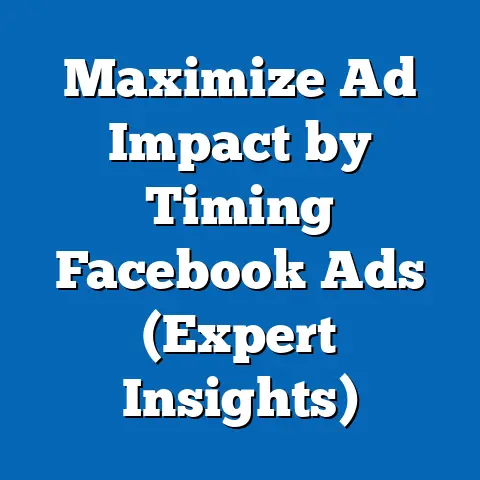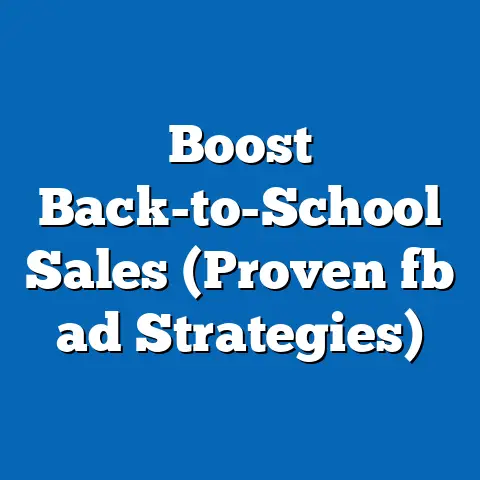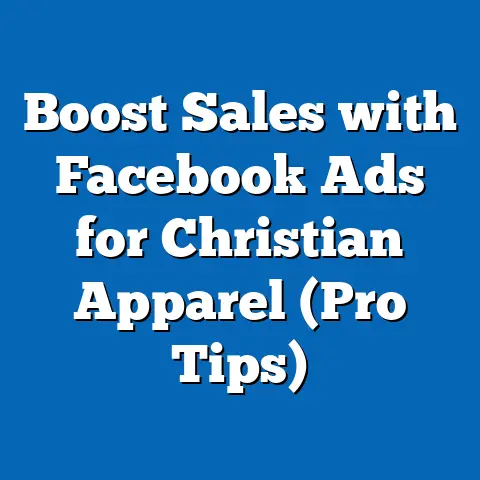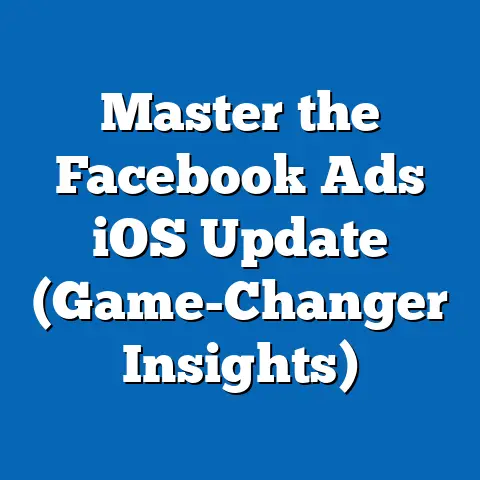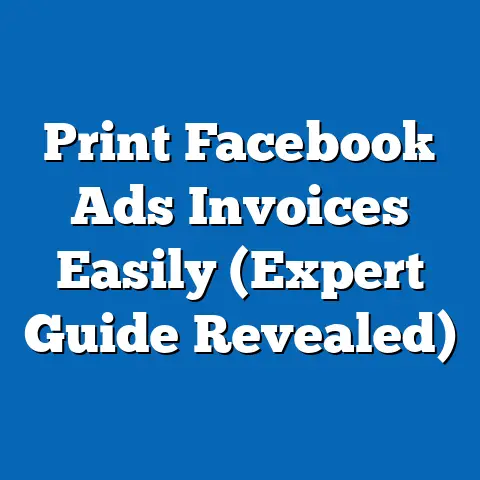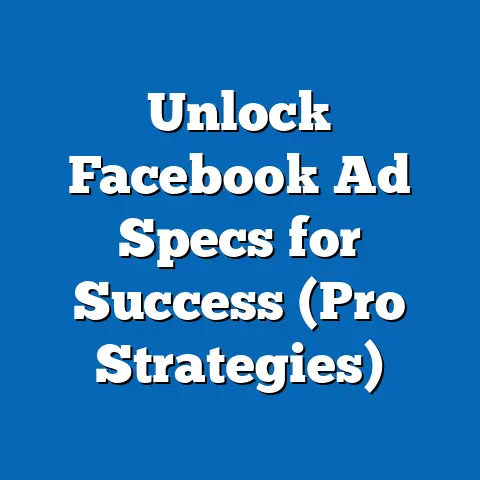Lower Facebook Ad CPC (Proven Strategies Revealed)
Lower Facebook Ad CPC: Proven Strategies Revealed
Have you ever felt like you’re throwing money into a black hole with your Facebook Ads? You’re reaching people, sure, but at what cost? A high CPC can be a real budget-buster, making it feel like you’re paying way too much for every single click.
Imagine this: on one side, a budget graph plummeting downward, signifying wasted ad spend and minimal returns. On the other side, a graph soaring upwards, representing efficient ad spend and a healthy ROI. I’ve seen both sides, and trust me, the latter is where you want to be.
Many advertisers struggle with this. They create what they think are great ads, target a seemingly relevant audience, and then… BAM! Sky-high CPCs that eat into their profits. The key isn’t just about reaching people; it’s about reaching the right people, with the right message, at the right price.
This article is your guide to turning the tide. I’m going to unveil proven strategies that I’ve used time and time again to drastically lower CPCs and maximize ad spend. We’re talking about actionable tactics, not just theory. So buckle up, and let’s get started!
1. Understanding Facebook Ad CPC
Before we jump into the strategies, let’s make sure we’re all on the same page about what CPC actually is and why it matters.
What is CPC?
CPC, or Cost Per Click, is exactly what it sounds like: the amount you pay each time someone clicks on your Facebook ad. It’s a crucial metric because it directly impacts your overall advertising budget. The lower your CPC, the more clicks you can get for the same amount of money, leading to potentially more website traffic, leads, and sales.
Why is it important?
Think of it this way: If you have a $100 budget, a $1 CPC gets you 100 clicks. But if you can lower that CPC to $0.50, you suddenly get 200 clicks for the same budget! That’s double the opportunity to convert those clicks into customers.
Factors Influencing CPC
Several factors can influence your CPC on Facebook:
- Competition: The more advertisers targeting the same audience as you, the higher the CPC is likely to be. This is simple supply and demand.
- Targeting Accuracy: Broad, unfocused targeting usually results in higher CPCs because you’re showing your ads to people who are less likely to be interested.
- Ad Relevance: Facebook rewards ads that are relevant to the audience with lower CPCs. This is measured by the “Ad Relevance Diagnostics” metrics (Quality Ranking, Engagement Rate Ranking, and Conversion Rate Ranking).
- Quality Score: A high-quality ad with compelling visuals and engaging copy tends to have a lower CPC.
- Time of Year: During peak advertising seasons like the holidays, CPCs tend to rise due to increased competition.
- Placement: Different placements (e.g., Facebook News Feed vs. Instagram Stories) can have different CPCs.
Industry Benchmarks
While CPCs can vary wildly, it’s helpful to have some benchmarks. According to recent data, the average CPC on Facebook across all industries is around \$0.38 – \$0.97. However, this can fluctuate based on the factors I mentioned above. Industries with higher competition, like finance and insurance, tend to have higher CPCs, while those with niche audiences might see lower costs.
Key Takeaway: Understanding the factors that influence CPC is the first step towards lowering it. By optimizing your targeting, ad content, and bidding strategy, you can significantly reduce your costs and improve your ROI.
2. The Importance of Targeting
This is where the magic really happens. I’ve seen countless campaigns transformed simply by refining the targeting. Think of it like this: you wouldn’t try to sell snow shovels in Hawaii, would you? The same principle applies to Facebook Ads.
Precise Targeting = Lower CPC
The more precisely you target your audience, the more relevant your ads will be to them. And as I mentioned earlier, relevance is key to lowering CPC. When Facebook sees that your ads are resonating with the audience you’re targeting, they reward you with lower costs.
Understanding Your Target Market
Before you even start creating ads, you need to have a deep understanding of your target market. This means knowing their:
- Demographics: Age, gender, location, education, income, etc.
- Psychographics: Interests, values, lifestyle, attitudes, etc.
- Pain Points: What problems are they trying to solve? What are their frustrations?
- Goals: What are they hoping to achieve? What are their aspirations?
The more you know about your audience, the better you can tailor your ads to their specific needs and desires.
Custom Audiences and Lookalike Audiences
These are two of the most powerful targeting tools in Facebook Ads Manager.
- Custom Audiences: These allow you to target people who have already interacted with your business, such as website visitors, email subscribers, or customers. By uploading a customer list or using website tracking data, you can create highly targeted audiences that are much more likely to convert.
- Lookalike Audiences: These allow you to find new people who are similar to your existing customers. Facebook analyzes the characteristics of your custom audience and finds other users who share those traits. This is a great way to expand your reach while still maintaining relevance.
I had one client who was struggling to get traction with their ads. They were targeting a broad audience with generic messaging. After implementing custom audiences based on their email list and website visitors, and then creating lookalike audiences from those, their CPC dropped by over 40% and their conversion rate skyrocketed!
Detailed Targeting Options
Facebook offers a wealth of detailed targeting options based on interests, behaviors, and demographics. Don’t be afraid to get granular!
- Interests: Target people based on their hobbies, passions, and interests.
- Behaviors: Target people based on their past purchase behavior, device usage, and other activities.
- Demographics: Target people based on their education, job title, relationship status, and other demographic information.
- Layering: Combine multiple targeting options to create even more specific audiences. For example, you could target people who are interested in “yoga” AND “meditation” AND live in a specific city.
Tips for Refining Audience Targeting
- Start Broad, Then Narrow Down: Don’t try to create the perfect audience from the get-go. Start with a broader audience and then use Facebook’s reporting tools to see which segments are performing best.
- Exclude Irrelevant Audiences: Sometimes, it’s just as important to exclude certain audiences as it is to include others. For example, if you’re promoting a high-end product, you might want to exclude people with low income levels.
- Regularly Review and Update Your Audiences: As your business evolves and your customers change, your audiences need to evolve as well. Regularly review your targeting settings and make adjustments as needed.
Key Takeaway: Targeting is the foundation of a successful Facebook Ad campaign. By understanding your audience, leveraging custom and lookalike audiences, and using detailed targeting options, you can create highly relevant ads that resonate with your target market and lower your CPC.
3. Crafting Compelling Ad Content
Now that you’ve got your targeting dialed in, it’s time to focus on the creative. Even the best-targeted ad will fail if the content is boring, irrelevant, or poorly executed.
The Power of Creative Ad Content
Think of your ad as a mini billboard vying for attention in a crowded marketplace. You have a split second to grab someone’s attention and convince them to click. That’s why your ad content needs to be visually appealing, engaging, and relevant to your target audience.
Eye-Catching Visuals
Visuals are the first thing people see, so they need to be high-quality and attention-grabbing.
- Use High-Resolution Images: Avoid blurry or pixelated images.
- Choose Relevant Images: Make sure your images are relevant to your product or service and to your target audience.
- Use Bright Colors and Contrasting Elements: Draw the eye with visually appealing colors and designs.
- Show People Using Your Product: Seeing people using your product can help potential customers visualize themselves doing the same.
- Test Different Visuals: A/B test different images and videos to see which ones perform best.
Engaging Copy
Your ad copy is your opportunity to tell a story, highlight the benefits of your product or service, and persuade people to click.
- Write Clear and Concise Headlines: Your headline is the most important part of your ad copy. Make it short, attention-grabbing, and relevant to your target audience.
- Highlight the Benefits, Not Just the Features: Focus on how your product or service will solve their problems or improve their lives.
- Use Strong Call-to-Actions: Tell people exactly what you want them to do (e.g., “Shop Now,” “Learn More,” “Sign Up”).
- Use Emotionally Charged Language: Tap into your audience’s emotions to create a connection.
- Keep it Short and Sweet: People have short attention spans, so get to the point quickly.
A/B Testing Ad Formats and Copy Variations
A/B testing is a crucial part of optimizing your ad content. It involves creating multiple versions of your ad with slight variations and then testing them against each other to see which one performs best.
- Ad Formats: Test different ad formats, such as carousel ads, slideshow ads, video ads, and single-image ads.
- Headlines: Test different headlines to see which ones are most effective at grabbing attention.
- Body Copy: Test different body copy variations to see which ones resonate most with your audience.
- Call-to-Actions: Test different call-to-actions to see which ones generate the most clicks.
- Visuals: Test different images and videos to see which ones are most visually appealing.
By continuously A/B testing your ad content, you can identify what works best for your audience and optimize your ads for maximum impact.
Key Takeaway: Compelling ad content is essential for lowering CPC. By creating eye-catching visuals and engaging copy, and by continuously A/B testing different variations, you can capture your audience’s attention and drive more clicks at a lower cost.
4. Utilizing Facebook Pixel
The Facebook Pixel is your secret weapon for tracking user behavior and optimizing your ads for conversions. If you’re not using it, you’re leaving money on the table.
What is Facebook Pixel?
The Facebook Pixel is a small snippet of code that you place on your website. It allows Facebook to track user behavior, such as page views, add-to-carts, and purchases. This data can then be used to:
- Track Conversions: See which ads are driving the most conversions.
- Optimize Ads: Optimize your ads for specific actions, such as purchases or leads.
- Retarget Audiences: Show ads to people who have already visited your website or interacted with your business.
The Power of Retargeting
Retargeting is one of the most effective ways to lower your CPC and improve your conversion rate. It involves showing ads to people who have already shown interest in your product or service.
Think about it: someone who has already visited your website is much more likely to be interested in your product than someone who has never heard of you. By retargeting these people, you can show them personalized ads that are tailored to their specific interests and needs.
For example, if someone visited a product page on your website but didn’t add the item to their cart, you could retarget them with an ad showing that specific product and offering a discount. This is a highly effective way to encourage them to complete the purchase.
Setting Up Facebook Pixel
Setting up Facebook Pixel is relatively easy. Here’s a step-by-step guide:
- Go to Facebook Events Manager: In your Facebook Ads Manager, click on the “Events Manager” tab.
- Create a Pixel: Click on the “Connect Data Sources” button and select “Web.” Then, follow the prompts to create your pixel.
- Install the Pixel Code: Facebook will provide you with a snippet of code that you need to place on your website. You can either manually add the code to your website’s header or use a plugin or integration if you’re using a platform like WordPress or Shopify.
- Set Up Events: Once the pixel is installed, you need to set up events to track specific actions, such as page views, add-to-carts, and purchases.
Leveraging Pixel Data for Ad Optimization
Once you’ve set up Facebook Pixel and started collecting data, you can use that data to optimize your ads in several ways:
- Create Custom Audiences: Use pixel data to create custom audiences of website visitors, people who added items to their cart, or people who made a purchase.
- Optimize for Conversions: Tell Facebook to optimize your ads for specific conversions, such as purchases or leads.
- Create Lookalike Audiences: Use pixel data to create lookalike audiences of people who are similar to your best customers.
Key Takeaway: Facebook Pixel is a powerful tool that can help you track user behavior, optimize your ads for conversions, and retarget audiences. By leveraging pixel data, you can significantly lower your CPC and improve your ROI.
5. Optimizing Ad Bidding Strategy
Your bidding strategy plays a crucial role in determining your CPC. Choosing the right strategy can help you get the most clicks for your budget.
Automatic vs. Manual Bidding
Facebook offers two main bidding options:
- Automatic Bidding: Facebook automatically sets your bids based on your budget and your target audience. This is a good option for beginners or for campaigns where you’re not sure what to bid.
- Manual Bidding: You manually set your bids, giving you more control over your CPC. This is a good option for experienced advertisers who want to optimize their bids for maximum performance.
Choosing the Right Bidding Strategy
The best bidding strategy for you will depend on your goals and your budget.
- Lowest Cost Bidding: Facebook will try to get you the lowest possible cost per result, but it may not deliver as many results as other bidding strategies.
- Cost Cap Bidding: You set a target cost per result, and Facebook will try to stay within that target.
- Bid Cap Bidding: You set a maximum bid that you’re willing to pay for each click or impression.
- Target Cost Bidding: You set a target cost per result, and Facebook will try to get you as many results as possible at that cost.
Setting a Realistic Budget
It’s important to set a realistic budget based on your goals and your target audience. If your budget is too low, you may not be able to reach enough people to get meaningful results. If your budget is too high, you may be wasting money.
Understanding the Bidding Landscape
Before you start bidding, it’s important to understand the bidding landscape within your target niche. This means researching what other advertisers are bidding and what kind of results they’re getting.
Adjusting Bids Based on Performance
It’s crucial to monitor your ad performance and adjust your bids accordingly. If you’re not getting the results you want, you may need to increase your bids. If you’re getting good results, you may be able to lower your bids and still maintain performance.
Key Takeaway: Your bidding strategy is a critical factor in determining your CPC. By choosing the right strategy, setting a realistic budget, understanding the bidding landscape, and adjusting your bids based on performance, you can optimize your ad spend and lower your CPC.
6. Continuous Monitoring and Adjustment
Facebook advertising is not a “set it and forget it” kind of thing. It requires constant monitoring and adjustment to ensure you’re getting the best possible results.
The Necessity of Regular Monitoring
Think of your Facebook Ads campaign like a garden. You can’t just plant the seeds and walk away. You need to water them, weed them, and prune them to help them grow. The same is true of your ads. You need to regularly monitor their performance and make adjustments as needed.
Key Performance Indicators (KPIs)
Here are some key performance indicators (KPIs) to focus on:
- CPC (Cost Per Click): How much you’re paying for each click.
- CTR (Click-Through Rate): The percentage of people who see your ad and click on it.
- Conversion Rate: The percentage of people who click on your ad and then take a desired action, such as making a purchase or filling out a form.
- Reach: The number of unique people who saw your ad.
- Frequency: The average number of times each person saw your ad.
- Relevance Score: A measure of how relevant your ad is to your target audience.
Interpreting Facebook Ads Manager Data
Facebook Ads Manager provides a wealth of data about your ad performance. It’s important to learn how to interpret this data so you can identify underperforming ads and make necessary adjustments.
Systematic Testing and Optimization
The key to sustained low CPC is a systematic approach to testing and optimization. This involves:
- Identifying Areas for Improvement: Look at your KPIs and identify areas where you can improve your performance.
- Developing Hypotheses: Come up with hypotheses about what changes might improve your performance. For example, you might hypothesize that changing your headline will increase your CTR.
- Testing Your Hypotheses: Run A/B tests to see if your hypotheses are correct.
- Implementing the Changes: If your tests show that a particular change improves your performance, implement that change across your campaign.
- Repeating the Process: Continuously monitor your performance and repeat the testing and optimization process to ensure sustained low CPC.
Key Takeaway: Continuous monitoring and adjustment are essential for maintaining low CPC. By regularly monitoring your KPIs, interpreting Facebook Ads Manager data, and using a systematic approach to testing and optimization, you can ensure that your ads are always performing at their best.
Conclusion
Lowering your Facebook ad CPC is not just about saving money; it’s about maximizing your ROI. By implementing the proven strategies I’ve shared in this article, you can significantly reduce your advertising costs and generate more meaningful engagement and conversions.
Remember, while achieving low CPC is critical, the ultimate goal is to drive business results. Don’t focus solely on lowering your CPC if it comes at the expense of your conversion rate or other important KPIs.
I encourage you to take actionable steps based on the strategies discussed to enhance your Facebook advertising efforts and achieve better ROI. Start by reviewing your targeting settings, refining your ad content, and setting up Facebook Pixel. Then, experiment with different bidding strategies and continuously monitor your performance.
With a little effort and a lot of data-driven decision-making, you can master the art of Facebook advertising and achieve your business goals. Good luck, and happy advertising!

